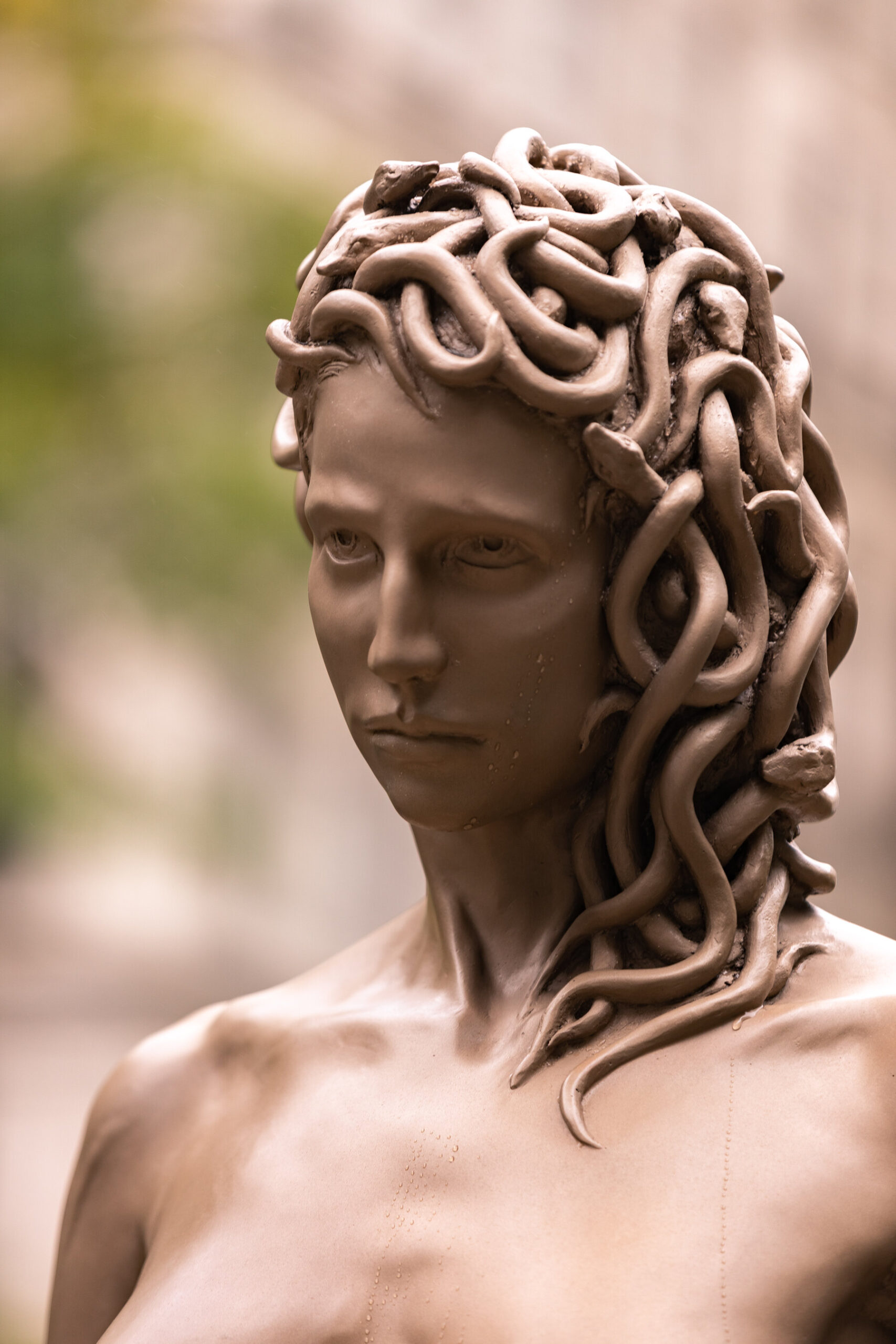Many people know the story of the Medusa from Greek mythology, who was cursed into a monster that turns people who look at her into stone by Athena for being raped by Poseidon in one of the goddess’ temples before being later killed by Perseus. Typically, Medusa has been depicted as an evil being that Perseus had to kill as a hero. However, artist Luciano Garbati decided to flip the script of this myth with a statue that was unveiled on Oct. 14 in New York City.
The statue, “Medusa With the Head of Perseus” stands at around seven feet tall and depicts a nude, model-esque Medusa carrying a sword and holding the head of Perseus. Garbati purposefully designed it to be a reversal of a classic Italian bronze statue created by Benvenuto Cellini. In Cellini’s statue, “Perseus With the Head of Medusa,” it is the Greek hero that carries Medusa’s head.
Despite Garbati starting his work on the Medusa statue in 2008, upon its recent reveal, many individuals were quick to link it to the recent #MeToo movement and feminism. These links were started not only because of the scene depicted in the statue, but also because of where it has been placed. It was installed in the center of Collect Pond Park, across from the building where several men have stood trial for sexual assault as a result of the #MeToo movement, the most notable of which being Harvey Weinstein.
However, Garbati has stated that the statue was not created purposely with feminism or the movement in mind. Instead, he wanted to make something that turned the myth of Medusa on its head, which, according to him on an application he wrote to have the statue installed in the park, had “communicated to women for millennia that if they are raped, it is their fault.”
At this point, according to the New York Times, the artist has said in an interview that he feels like the sculpture has become an entity that is independent from himself due to outside interpretation.
He said, “I am honored by the fact that the sculpture has been chosen as a symbol.”
While this statue might be located in New York, the image of it has spread throughout the country, including to Winthrop University.
Sophomore theatre performance major, A’Vian Williams said, “the statute is cool. I like a lot of things having to do with Greek mythology.”
When asked about what they think it stands for, he said, “It could be connected to feminism and the movement, but really only the artist can say why they made it and their reasons for it.”
Williams’ appreciation of the statue was shared by sophomore theatre tech and design major, Eden Cook.
“I really do enjoy this interpretation of the classic story of Medusa. I know when I was younger, I never really understood why Perseus was told to do this,” she said. “The act of revers- ing the roles is a powerful move, especially since Medusa was assaulted in the temple of Athena.”
Amanda Beard, a sophomore visual communications illustration major, felt that the statue was “very empowering. Not just through the fact that Medusa is holding the head of Perseus, but also through her stance…It’s both relaxed and strong, she seems like she is firmly planted and wouldn’t be easy to knock over.”
Beard continued, “It certainly seems to stand for woman empowerment and despite the fact that Medusa herself was turned into a monster, she still looks very beautiful, showing the duality of women. They can fight back when needed and still be beautiful.”
Photo credit to New York Times




